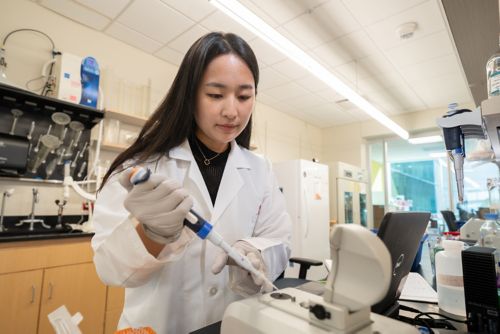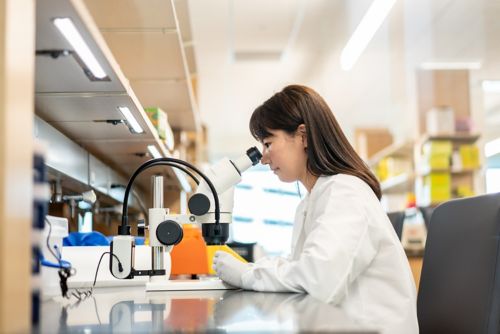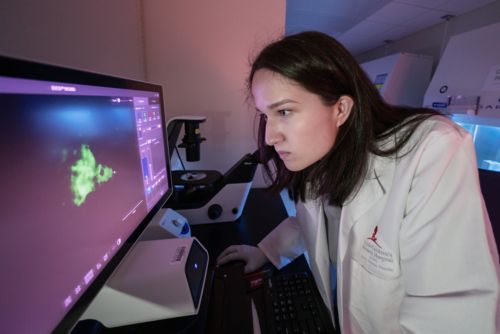St. Jude Family of Websites
Explore our cutting edge research, world-class patient care, career opportunities and more.
St. Jude Children's Research Hospital Home

- Fundraising
St. Jude Family of Websites
Explore our cutting edge research, world-class patient care, career opportunities and more.
St. Jude Children's Research Hospital Home

- Fundraising
Jamy Peng Lab
Searching for insights into normal and diseased stem cell behaviors
About the Peng Lab
Stem cells make crucial decisions—survival, self-renewal, and differentiation—with remarkable spatiotemporal precision. Our laboratory studies how stem cells make these decisions by using cutting-edge molecular assays, rigorous cell studies, and -omics-based approaches. Our primary objective is to define the intricate mechanisms governing stem cell fate in normal and diseased development. By elucidating these mechanisms, we will shed light on the complexities inherent in pediatric brain tumors and neurodevelopmental disorders. Armed with a deeper understanding of mechanisms driving stem cell fate, we are poised to improve therapeutic strategies for pediatric catastrophic diseases.

In the news
Laying the foundation for neuronal development
See how blocking one kinase resulted in premature neuron growth
Our research summary
Our laboratory seeks answers to how genomic DNA organization and gene-regulation mechanisms within stem cells affect a cell’s behavior and functional role in both normal and disease states. To study genomic DNA organization, we focus our efforts on chromatin—the structure within the nucleus of a cell that serves to package and contain a cell’s DNA. Specifically, we examine how chromatin structure and histones—the proteins that serve as building blocks of chromatin—affect gene expression.
Of all the different types of mechanisms that regulate chromatin structure, we concentrate on the modification of histone H3. This histone protein has a twenty-seventh residue, lysine (K), that can be methylated or acetylated. Our interest in H3K27 arises from the fact that, in pediatric cancers (blood, bone, brain, etc.), all the enzymes that modify H3K27 are either mutated or dysfunctional.

To analyze the normal and diseased functions of these H3K27 modifiers, we try to identify new factors and potential regulators. We study how these new factors control the stem cell models to grow or give rise to specialized neuronal cells. New knowledge from these studies enables us to uncover molecular mechanisms that regulate H3K27 modifications, chromatin structure, as well as gene expression and stem cell behavior.

In our examination of the factors that interact with H3K27 modifiers, we find these factors regulate neural stem cell growth, survival, and differentiation. Without these factors, we characterize the brain to undergo massive cell death or excessive cell proliferation to the point that the cells do not differentiate. As we try to expand our understanding of these factors, we strive to define a pathway from transcription circuitry and signaling pathways to intrinsic mechanisms that alter chromatin structure, gene expression, and stem cell behaviors. To this end, we use increasingly advanced techniques—imaging, deep sequencing, and data analysis—to profile the effects of stem cell behavior on normal and disease development in brain organoids and pediatric cancer models.
Publications
Contact us
Jamy C. Peng, PhD
Associate Member, St. Jude Faculty
Department of Developmental Neurobiology
MS 323, Room D2038F
St. Jude Children's Research Hospital

Memphis, TN, 38105-3678 USA GET DIRECTIONS

